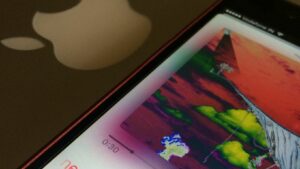Ever found yourself scrolling through an endless list of playlists on Apple Music, wishing you could declutter? Maybe you’ve outgrown some tunes or simply crave a fresh start. Either way, deleting a playlist on Apple Music isn’t as daunting as it may seem.
This article will guide you step by step, making the process a breeze. Whether you’re a tech newbie or a seasoned Apple user, you’ll find it easy to navigate through. So, let’s get ready to tidy up your Apple Music and make room for new playlists that truly resonate with your current vibe.
How to Delete Playlist on Apple Music
Deleting a playlist from Apple Music involves a few simple steps. No matter the device – be it an iPhone, an iPad, or Mac – the process remains fundamentally the same. In this guide, readers find the process clarified in a step-by-step manner. Additionally, the guide also addresses how to undertake this task without deleting the songs contained within these playlists. Follow along carefully and you’ll manage this process in no time.
Before You Delete: Things to Consider
 Before hastily hitting the ‘delete’ button, it’s crucial to ponder certain matters. Ownership status serves as a primary concern, only owners can delete shared playlists. Additionally, deleting removes the playlist not only from one’s library but also from Apple devices. Lastly, bear in mind that deleted playlists can’t be recovered, even within the 90 days from the trash or ‘recently deleted.’ Instead, consider hiding playlists to keep them out of sight but still accessible if one reconsiders.
Before hastily hitting the ‘delete’ button, it’s crucial to ponder certain matters. Ownership status serves as a primary concern, only owners can delete shared playlists. Additionally, deleting removes the playlist not only from one’s library but also from Apple devices. Lastly, bear in mind that deleted playlists can’t be recovered, even within the 90 days from the trash or ‘recently deleted.’ Instead, consider hiding playlists to keep them out of sight but still accessible if one reconsiders.
Step-by-Step Guide
Deleting a Playlist from iPhone or iPad
Users find deleting a playlist from an iPhone or iPad a straightforward task. First, the Apple Music app is launched, and then the user locates the Library section. Following that, the Playlists category is tapped and the specific playlist to be deleted is chosen. The ellipsis (…), located at the top right corner, provides a drop down menu, containing the Delete from Library option. With a tap, the playlist gets removed from these devices.
Deleting a Playlist from a Mac or PC
Users of Mac or PC systems find the deletion process similarly user-friendly. Upon launching Apple Music, the sidebar presents the Playlists category. Selection of the specific playlist follows, after which right-clicking or Control-clicking proffers the Delete from Library option. With a click, the playlist’s existence ends on these devices.
Deleting a Playlist via Apple Music Web Player
Apple Music Web Player offers an avenue for those unable to access the Apple Music app. Navigate the website, meander to the Playlists section, and select the intended playlist. The ellipsis (…), functioning similarly to the app, delivers the Delete from Library option, effectively erasing the playlist.
Troubleshooting Common Issues When Deleting Playlists
While deleting playlists on Apple Music typically goes smoothly, it’s not uncommon to encounter problems. This section offers insights on resolving common hurdles. Playlist deletion may fail due to syncing issues, temporary server errors, or software glitches. Let’s explore these issues in detail.
 Syncing issues often hamper playlist deletion. For example, a playlist deleted from an iPhone may still appear on a paired Mac. In such cases, one must ensure all devices linked to the same Apple account stay synchronized. Update all Apple devices to the latest software version, activate “Sync Library” in the music settings, and connect to a stable internet connection.
Syncing issues often hamper playlist deletion. For example, a playlist deleted from an iPhone may still appear on a paired Mac. In such cases, one must ensure all devices linked to the same Apple account stay synchronized. Update all Apple devices to the latest software version, activate “Sync Library” in the music settings, and connect to a stable internet connection.
Temporary server errors often forestall deletion attempts. Interacting with the Apple Music server, such issues typically trigger error messages or slow app function. In response, it’s prudent to wait it out – a server error may get resolved within a short period. Alternatively, one can try restarting the device or re-logging into the Apple Music account.
Alternatives to Deleting Your Playlists
Opting for alternatives to playlist deletion provides flexibility. Hiding a playlist, for instance, spares users of the permanence that deletion entails. When temporarily uninterested in a set of songs, they find advantage in this option. Another beneficial alternative is duplicating playlists. This method ensures a backup exists before making drastic changes. Lastly, users also consider playlist organization. Grouping songs into more specific categories often helps in minimizing clutter without needing to delete the content altogether.


